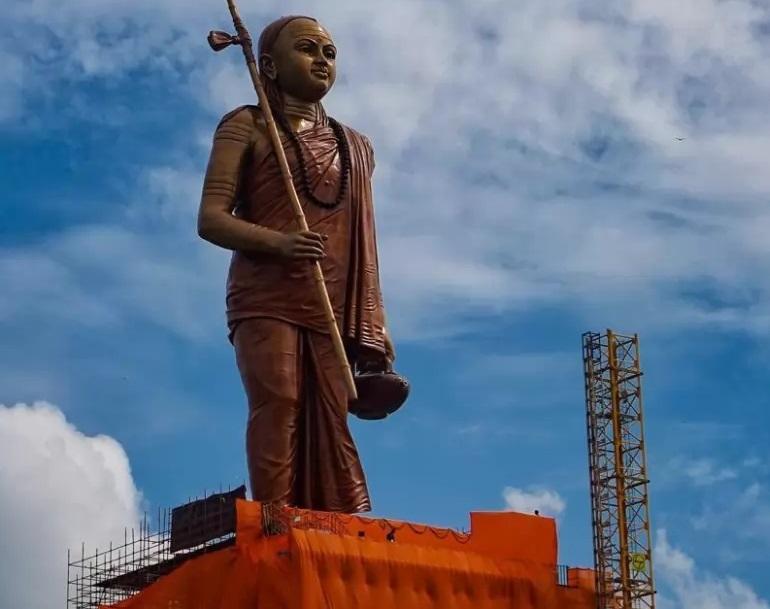Statue of Adi Shankaracharya | 26 Sep 2023
Why in News?
Chief Minister of Madhya Pradesh (M.P) unveiled the 108 feet high 'Statue of Oneness' of Adi Shankaracharya on Mandhata mountain at Omkareshwar in Khandwa district, M.P and laid the foundation stone of Advaita Lok.
Why is the Mandhata Consider Significant?
- The Mandhata island, nestled on the Narmada River, is home to two of the 12 Jyotirlingas – Omkareshwara (located on the south side of the island) and Amareshwara.
- The island is dotted with Shaivite, Vaisnavite, and Jain temples dating back to the 14th and 18th centuries.
- The name ‘Omkareshwar’ is derived from the shape of the island, which resembles the sacred syllable ‘Om’, and its name means ‘the Lord of Omkara’.
Who was Adi Shankaracharya?
- About:
- Known as Adi Shankara(788–820 CE), born at Kaladi near Kochi, Kerala.
- Took Samadhi at the age of 33, at Kedar tirth.
- He was a devotee of Shiva.
- He is said to have arrived at Omkareshwar as a young monk, where he encountered his Guru Govind Bhagwadpad.
- Resided in the sacred city for four years, and received his education .
- He departed Omkareshwar at the age of 12 and embarked on a journey across the nation, disseminating the teachings of Advaita Vedanta philosophy and elucidating its principles to the people.
- Propounded the Doctrine of Advaita (Monism) and wrote many commentaries on the Vedic canon (Upanishads, Brahma Sutras and Bhagavad Gita) in Sanskrit.
- He was opposed to Buddhist philosophers.
- Known as Adi Shankara(788–820 CE), born at Kaladi near Kochi, Kerala.
- Major Work:
- Brahmasutrabhasya (Bhashya or commentary on the Brahma Sutra).
- Bhajagovinda Stotra.
- Nirvana Shatakam.
- Prakaran Granths.
- Other Contributions:
- Was responsible for reviving Hinduism in India to a great extent when Buddhism was gaining popularity.
- Established four Mathas in the four corners of India at Sringeri, Puri, Dwaraka and Badrinath– for propagation of Sanathana Dharma
What is Advaita Vedanta ?
- It articulates a philosophical position of radical nondualism, a revisionary worldview which it derives from the ancient Upanishadic texts.
- According to Advaita Vedantins, the Upanishads reveal a fundamental principle of nonduality termed ‘brahman’, which is the reality of all things.
- Advaitins understand brahman as transcending individuality and empirical plurality.
- They seek to establish that the essential core of one’s self (atman) is brahman.
- The fundamental thrust of Advaita Vedanta is that the atman is pure non-intentional consciousness.
- It is one without a second, nondual, infinite existence, and numerically identical with brahman.
Other Famous Statue
- Previously, Prime Minister (PM) of India inaugurated the Statue of Equality on the outskirts of Hyderabad to commemorate the 11th-century Bhakti saint Sri Ramanujacharya on his 1,000th birth anniversary.
- In 2018, PM inaugurated the Statue of Unity in Gujarat's Kevadia in memory of former deputy Prime Minister Sardar Vallabhbhai Patel.

